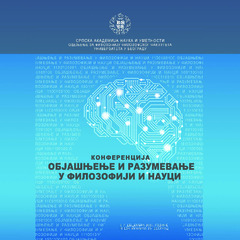Приказ основних података о документу
The epistemic value of participant observation: Between explanation and understanding
| dc.creator | Knežević, Aleksandra | |
| dc.date.accessioned | 2024-01-15T09:47:56Z | |
| dc.date.available | 2024-01-15T09:47:56Z | |
| dc.date.issued | 2023 | |
| dc.identifier.uri | http://rifdt.instifdt.bg.ac.rs/123456789/3703 | |
| dc.description.abstract | Participant observation is a method that tries to capture the beliefs and practices of the people being studied as they occur in their natural settings. Bronislaw Malinowski was the first to describe participant observation as an empirical method. Following Clifford Geertz, this method has been described as enabling “thick description”. It has been presented as a method for the “hermeneutical analysis” of culture. As such, it is seen as the means for the production of interpretations of human actions, contributing thereby to our understanding of sociocultural phenomena. That is to say, participant observation is understood as being at odds with the research that explores the causes of the phenomena observed. This method also tends to be the defining feature of sociocultural anthropology and practicing it for at least a year (usually during the PhD) is the inescapable rite of passage for calling oneself a sociocultural anthropologist. Despite its central role in sociocultural anthropology, participant observation stands aside as a scientific method. It obviously differs from the experimental method, which is often presented as the paramount example of scientific practice. It also differs from mere observational methods – as practiced, for instance, by astronomers observing stars or even by ethologists observing animals’ behavior. Indeed, the participant observer has to be directly involved, for a sufficient amount of time, in the lives of the ‘observed’. Only this can bring the genuine understanding that sociocultural anthropologists are after. Participant observation has therefore an epistemic value, but it is one of a specific kind. Two questions follow: first, what makes participant observation so valuable in knowledge production? Second, does participant observation have epistemic value for those who are looking for causal explanations? In this paper, I analyze the processes through which knowledge is produced by way of participant observation. My argument rests on a description of the cognitive feats of participant observation since I hold that the cognitive activity of interpreting has not yet been fully described and assessed as such. My argument goes as follows: I argue that the process of interpretation in participant observation involves relying heavily on what cognitive scientists call “mind-reading” capabilities. Second, I claim that this characteristic use of mind-reading makes participant observation useful for identifying the causes of sociocultural phenomena. Thus, I conclude that participant observation is an adequate method for describing the causal relationships that constitute sociocultural phenomena. | sr |
| dc.description.abstract | Посматрање са учествовањем је метод којим се описују веровања и праксе људи у њиховом природном окружењу. Бронислав Малиновски први је користио и описао посматрање са учествовањем као емпиријски метод. Након Клифорда Герца, овај метод се користио за долазак до „густих описа”. Односно, представљен је као метод за „херменеутичку анализу” културе, то јест као средство за долазак до интерпретација људских поступака, доприносећи на тај начин разумевању социокултурних феномена. Према томе, посматрање са учествовањем сматра се у супротности са истраживањем које тражи узроке посматраних појава. Овај метод је такође дефинишућа карактеристика социокултурне антропологије и практиковање посматрања са учествовањем најмање годину дана (обично током доктората) неизбежан је „обред преласка” у социокултурног антрополога. Упркос својој централној улози у овој дисциплини, посматрање са учествовањем стоји по страни као научни метод. Очигледно се разликује од експерименталне методе, која се често представља као парадигматичан пример научне праксе. Такође се разликује од пуких метода посматрања – како то практикују, на пример, астрономи који посматрају звезде или етолози који посматрају понашање животиња. Заиста, посматрач-учесник мора бити директно укључен, довољно времена, у животе „посматраних”. Само се тако може доћи до истинског разумевања које траже социокултурни антрополози. Посматрање са учествовањем, стога, има сазнају вредност, али посебне врсте. Следе два питања: прво, шта посматрање са учествовањем чини тако вредним у производњи знања? Друго, да ли посматрање са учествовањем има сазнајну вредност за оне који траже узрочна објашњења? У овом раду анализирам процесе кроз које се знање производи путем посматрања са учествовањем. Мој аргумент почива на опису когнитивних процеса који леже у основи овог метода будући да сматрам да когнитивна активност интерпретације још увек није у потпуности описана. Мој аргумент је следећи: тврдим да процес интерпретације у посматрању са учествовањем укључује у великој мери ослањање на оно што когнитивни научници називају способностима „читања ума”. Друго, тврдим да ова карактеристична употреба „читања ума” чини посматрање са учествовањем корисним за изналажење узрока социокултурних феномена. Дакле, закључујем да је посматрање са учествовањем адекватан метод за описивање узрочних веза које конституишу социокултурне феномене. | sr |
| dc.language.iso | sr | sr |
| dc.language.iso | en | sr |
| dc.publisher | Srpska akademija nauka i umetnosti i Odeljenje za filozofiju Filozofskog fakulteta Univerziteta u Beogradu | sr |
| dc.relation | "info:eu-repo/grantAgreement/MESTD/inst-2020/200025/RS//" | sr |
| dc.rights | openAccess | sr |
| dc.rights.uri | https://creativecommons.org/licenses/by/4.0/ | |
| dc.source | Objašnjenje i razumevanje u filozofiji i nauci | sr |
| dc.subject | participant observation | sr |
| dc.subject | understanding | sr |
| dc.subject | interpretation | sr |
| dc.subject | causal explanation | sr |
| dc.subject | mind-reading | sr |
| dc.subject | posmatranje sa učestvovanjem | sr |
| dc.subject | razumevanje | sr |
| dc.subject | interpretacija | sr |
| dc.subject | uzročno objašnjenje | sr |
| dc.subject | "čitanje uma" | sr |
| dc.title | The epistemic value of participant observation: Between explanation and understanding | sr |
| dc.type | conferenceObject | sr |
| dc.rights.license | BY | sr |
| dc.type.version | publishedVersion | sr |
| dc.identifier.fulltext | http://rifdt.instifdt.bg.ac.rs/bitstream/id/13423/bitstream_13423.pdf | |
| dc.identifier.rcub | https://hdl.handle.net/21.15107/rcub_rifdt_3703 |

